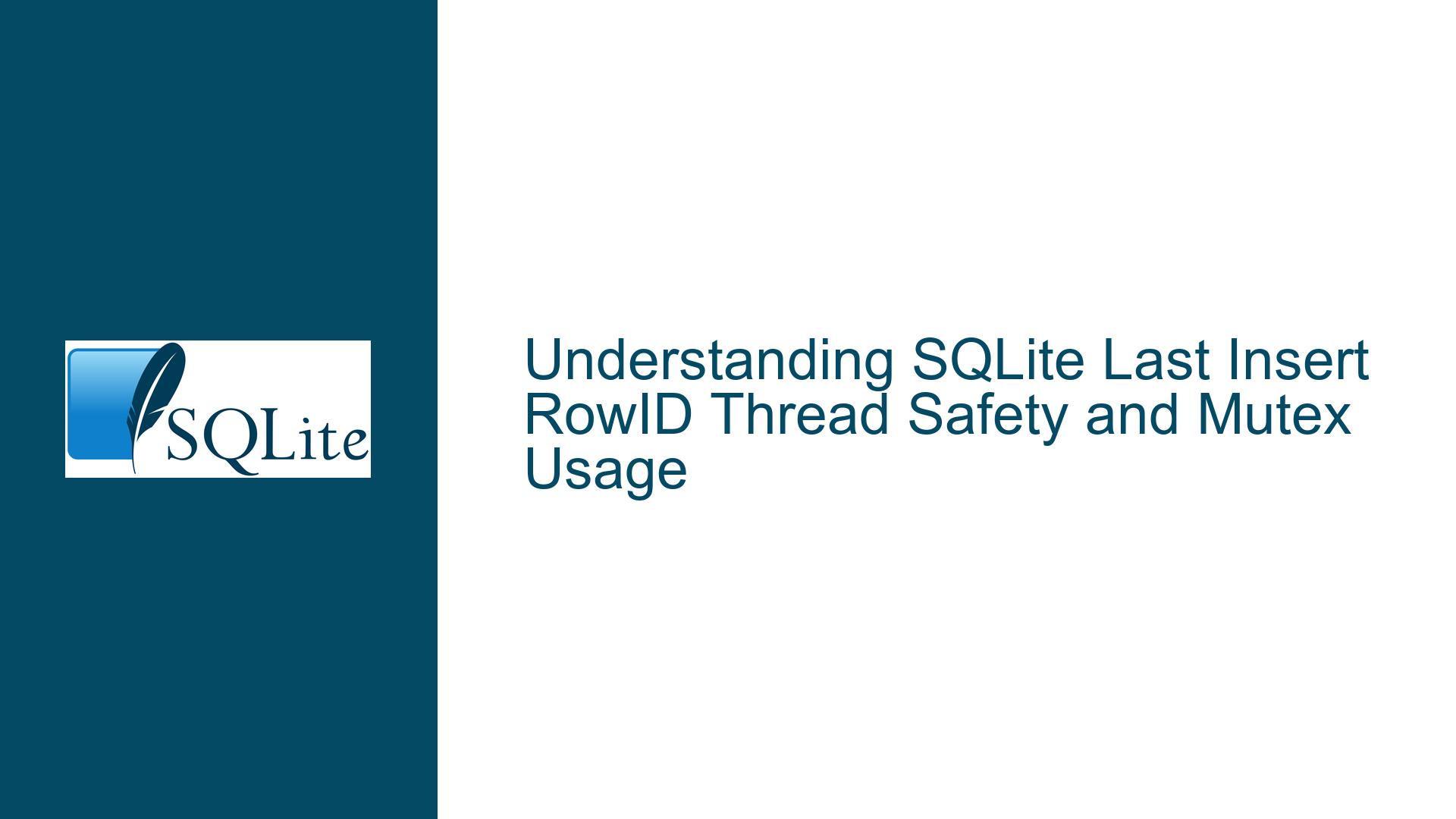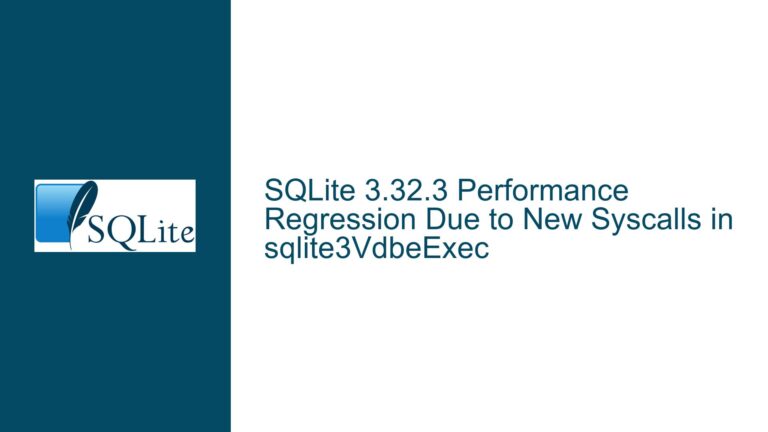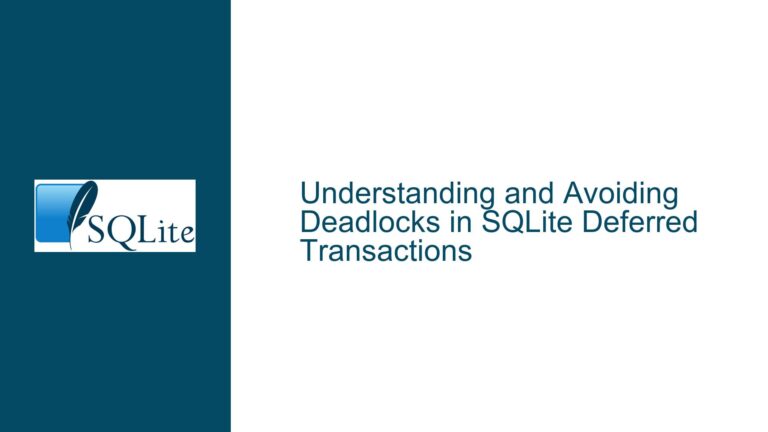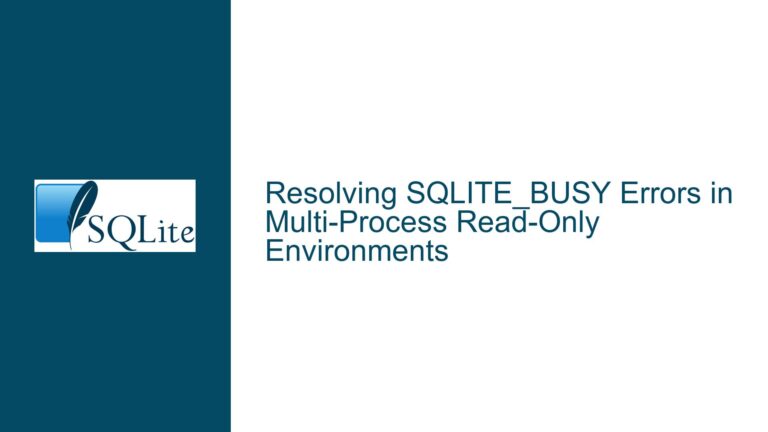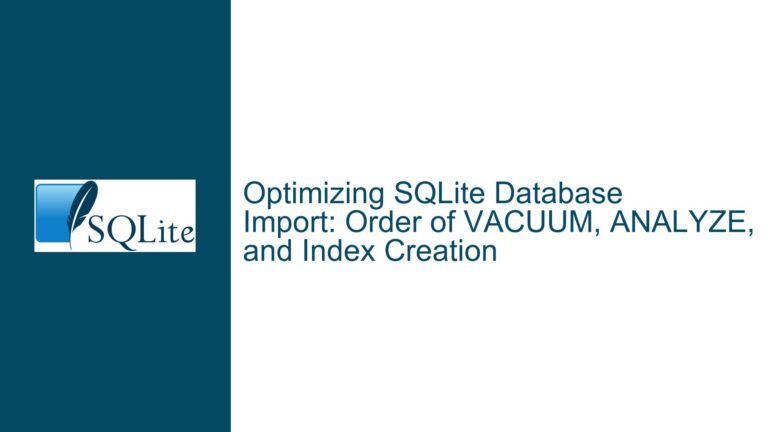SQLite Last Insert RowID Thread Safety and Mutex Usage
SQLite Last Insert RowID Behavior in Multi-Threaded Environments
The behavior of sqlite3_last_insert_rowid and sqlite3_set_last_insert_rowid in SQLite is a nuanced topic, particularly when considering multi-threaded environments. The core issue revolves around the thread safety of these functions and the implications of their mutex usage. Specifically, the sqlite3_set_last_insert_rowid function is mutex-protected, while sqlite3_last_insert_rowid is not. This asymmetry raises questions about data consistency and the potential for data races in multi-threaded scenarios.
The sqlite3_last_insert_rowid function is designed to return the ROWID of the most recent insert operation. However, its implementation does not include mutex protection, which means that in a multi-threaded environment, the value returned by this function could be inconsistent or even garbage if another thread is performing an INSERT operation on the same connection simultaneously. This behavior is documented, but it can still be a source of confusion and potential bugs for developers who are not fully aware of the implications.
On the other hand, sqlite3_set_last_insert_rowid is mutex-protected, ensuring that the value of lastRowid is set in a thread-safe manner. This mutex protection is necessary to prevent data races when multiple threads attempt to set the lastRowid simultaneously. However, the lack of mutex protection in the sqlite3_last_insert_rowid function means that even though the lastRowid is set in a thread-safe manner, reading it is not guaranteed to be thread-safe.
This asymmetry in mutex usage can lead to subtle bugs, especially in environments where multiple threads might be accessing the same SQLite connection. The issue is further complicated by the fact that SQLite’s documentation explicitly states that the sqlite3_last_insert_rowid function may return garbage if another thread is performing an INSERT operation on the same connection while the function is running. This means that developers must be cautious when using these functions in multi-threaded environments and should ensure that they adhere to the "single thread per connection" rule to avoid data inconsistencies.
Interrupted Write Operations and Memory Consistency Issues
The potential causes of the issues surrounding sqlite3_last_insert_rowid and sqlite3_set_last_insert_rowid can be traced back to the underlying memory architecture and the way SQLite handles thread safety. One of the primary causes is the lack of mutex protection in the sqlite3_last_insert_rowid function, which can lead to data races in multi-threaded environments. When multiple threads access the same SQLite connection, the lastRowid variable can be clobbered by an INSERT operation from another thread, leading to inconsistent or garbage values being returned.
Another cause is the memory consistency model of the underlying hardware. Modern CPUs often have complex memory architectures that can lead to visibility issues between threads. Even though the sqlite3_set_last_insert_rowid function is mutex-protected, the memory barrier issued when releasing the mutex ensures that the writes executed by one thread are visible to all other CPUs. However, if a different thread uses the connection and changes the lastRowid variable, the value returned by sqlite3_last_insert_rowid may still be inconsistent due to the lack of mutex protection on the read side.
The situation is further complicated by the fact that SQLite requires only C89, which does not have an official memory model. This means that the behavior of these functions can vary depending on the platform and the specific memory architecture of the hardware. On modern hardware with 64-bit atomic writes, the un-mutexed read should be visible thanks to the memory barrier, but this is not guaranteed on all platforms. This can lead to subtle bugs that are difficult to diagnose and fix.
In addition, the use of virtual tables or trigger programs can also lead to unexpected changes in the lastRowid variable. If a different thread issues an INSERT operation as a result of a virtual table implementation or a trigger program, the lastRowid variable may be clobbered, leading to inconsistent values being returned by sqlite3_last_insert_rowid. This is already a programming error, as it violates the "single thread per connection" rule, but it can still lead to subtle bugs that are difficult to diagnose.
Implementing Thread-Safe Last Insert RowID Handling
To address the issues surrounding sqlite3_last_insert_rowid and sqlite3_set_last_insert_rowid, developers should take several steps to ensure thread safety and data consistency. The first and most important step is to adhere to the "single thread per connection" rule. This means that each SQLite connection should be used by only one thread at a time. By enforcing this rule, developers can avoid the data races and inconsistencies that can arise from multiple threads accessing the same connection simultaneously.
If it is not possible to enforce the "single thread per connection" rule, developers should consider using additional synchronization mechanisms to protect access to the lastRowid variable. One approach is to use a mutex to protect both the read and write operations on the lastRowid variable. This would ensure that the lastRowid variable is accessed in a thread-safe manner, preventing data races and inconsistencies.
Another approach is to use atomic operations to ensure that the lastRowid variable is accessed in a thread-safe manner. Modern hardware with 64-bit atomic writes can support this approach, but it is important to note that this is not guaranteed on all platforms. Developers should carefully consider the memory architecture of their target platform and ensure that the atomic operations are supported before relying on this approach.
In addition to these synchronization mechanisms, developers should also consider using the PRAGMA journal_mode setting to ensure that the database is in a consistent state after a crash or power failure. The PRAGMA journal_mode setting controls how SQLite handles the journal file, which is used to ensure atomicity and durability of transactions. By setting the PRAGMA journal_mode to WAL (Write-Ahead Logging), developers can improve the performance and reliability of their database, while also ensuring that the lastRowid variable is consistent after a crash or power failure.
Finally, developers should consider implementing a robust backup strategy to ensure that their database can be recovered in the event of a crash or power failure. This can include regular backups of the database file, as well as the use of the sqlite3_backup API to create online backups of the database. By implementing a robust backup strategy, developers can ensure that their database is protected against data loss and corruption, while also ensuring that the lastRowid variable is consistent and reliable.
In conclusion, the behavior of sqlite3_last_insert_rowid and sqlite3_set_last_insert_rowid in SQLite is a complex and nuanced topic, particularly in multi-threaded environments. By understanding the potential causes of data races and inconsistencies, and by implementing the appropriate synchronization mechanisms and backup strategies, developers can ensure that their database is thread-safe and reliable, even in the face of complex memory architectures and multi-threaded access patterns.
